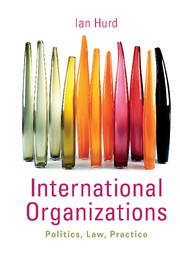Book contents
- Frontmatter
- Contents
- Preface
- Acknowledgement
- 1 Introduction to international organizations
- 2 A guide to the study of international organizations
- 3 The World Trade Organization
- 4 The International Monetary Fund and the World Bank
- 5 The United Nations I
- 6 The United Nations II
- 7 The International Labor Organization
- 8 The International Court of Justice
- 9 The International Criminal Court
- 10 Regional Organizations
- 11 Conclusion
- Index
4 - The International Monetary Fund and the World Bank
- Frontmatter
- Contents
- Preface
- Acknowledgement
- 1 Introduction to international organizations
- 2 A guide to the study of international organizations
- 3 The World Trade Organization
- 4 The International Monetary Fund and the World Bank
- 5 The United Nations I
- 6 The United Nations II
- 7 The International Labor Organization
- 8 The International Court of Justice
- 9 The International Criminal Court
- 10 Regional Organizations
- 11 Conclusion
- Index
Summary
The two international financial institutions created after World War II provide a similar service to countries but in very different contexts and for different purposes. Both pool the resources of their members and use that capital to fund lending to members in need. The IMF can only lend to countries with immediate balance of payments problems. It makes short-term loans of foreign currencies that the borrowing country must use to finance the stabilization of its own currency or monetary system. As a precondition to the loan, the Fund generally requires that the borrower change its policies in ways that enable future monetary stability. The World Bank makes longer-term loans to pay for specific projects related to development or poverty reduction. Most Bank loans are tied to a particular project undertaken by the borrowing government.
The World Bank and the International Monetary Fund are twinned institutions with a common origin and many shared structural features. Their practices and their purposes are, however, very different, and the contrast that they display helps to show how very different outcomes can arise out of similar legal structures. The two organizations originate in the explosion of institution-making at the end of World War II, where the Bretton Woods conference of 1944 was used as a forum for negotiating among the capitalist powers of the day a new institutional architecture for international economics. They were both founded by inter-state treaties, known as the Articles of Agreement of each institution, agreed on at Bretton Woods.
- Type
- Chapter
- Information
- International OrganizationsPolitics, Law, Practice, pp. 66 - 96Publisher: Cambridge University PressPrint publication year: 2010



